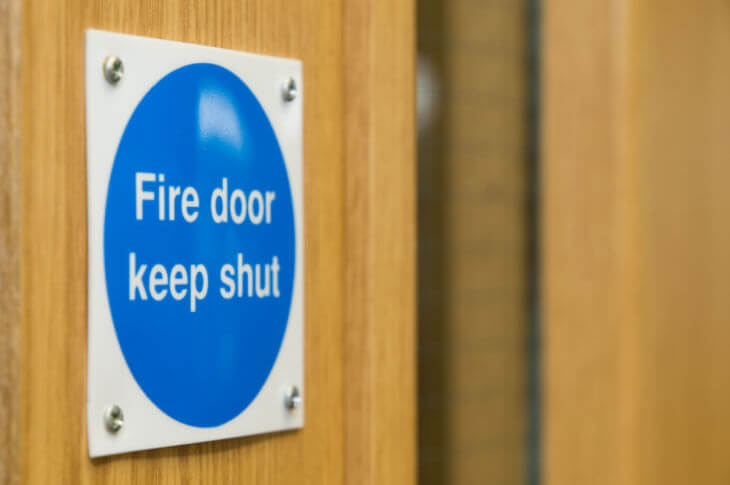
Most people think of fire doors as something of an inconvenience, and it’s easy to see why. If you have large premises, your staff may have to negotiate their way through many fire doors in order to get from one end of the building to the other. If they’re carrying something, having to stop frequently to open doors is going to be awkward, not to mention annoying, which is probably why so many people prop fire doors open, even though they know they’re not supposed to.
Fire doors save lives. In the event of a fire, fire doors will provide enough protection against the encroaching flames and smoke long enough to give people the opportunity to evacuate the building. Fire doors are rated either FD30 or FD60, which are designed to provide 30 minutes’ or 60 minutes’ worth of fire resistance. FD30-rated doors are suitable for smaller buildings where 30 minutes will be plenty of time for occupants to evacuate. FD60-rated doors are more advisable in larger multi-occupancy buildings where more time will be required for everyone to reach safety.
Internal fire doors split a building into compartments which helps to slow the spread of fire. and highlight the escape route for the length of time indicated by the FD rating. In contrast, an external fire door sits at the end of the escape route and does not need to be fire resistant or kept closed. External fire doors are not therefore actual ‘fire doors’, they are ‘fire exit doors’ with push-bar handles. You and your staff can use the fire exit doors as a normal door though they do have to comply with the regulations for fire doors (clear signage, method of opening from the inside) and must remain clear at all times.
By law, fire doors must be fitted along the designated fire escape route as a minimum requirement, according to the Regulatory Reform (Fire Safety) Order 2005 (RRO). These regulations require property owners to install appropriate fire doors in all UK business premises, and to appoint a responsible person to ensure regular fire door inspections under RRO guidance.
The person responsible for fire safety in business or other non-domestic premises can be the employer, owner, landlord, occupier or any other person with control of the premises, for example a facilities manager, building manager, managing agent or risk assessor. It will be their responsibility to ensure that no internal fire doors are left propped open.
When having internal or external fire doors fitted it is important to make sure they are installed by an experienced and trusted specialist. It is worth noting that the slightest gap or crack between the door and its surround can cause a fault which will fail the RRO requirements.
As the majority of fire doors are used on a daily basis, it is likely they will be susceptible to wear and tear. As they are such an essential part of your staff’s safety, they need to be regularly inspected to make sure that, in the event of a fire, they will do the job they were built for, saving lives. We recommend that the responsible person or persons undertake regular visual fire door checks on a weekly or monthly basis. As part of our fire protection services, we offer bi-annual fire door inspections to ensure the safety of your employees.
Our fire safety consultants specialise in fire extinguishers, fire risk assessments, training and consultancy throughout the UK. We are here to assist you with all your fire door regulatory requirements. Please contact us for more information.